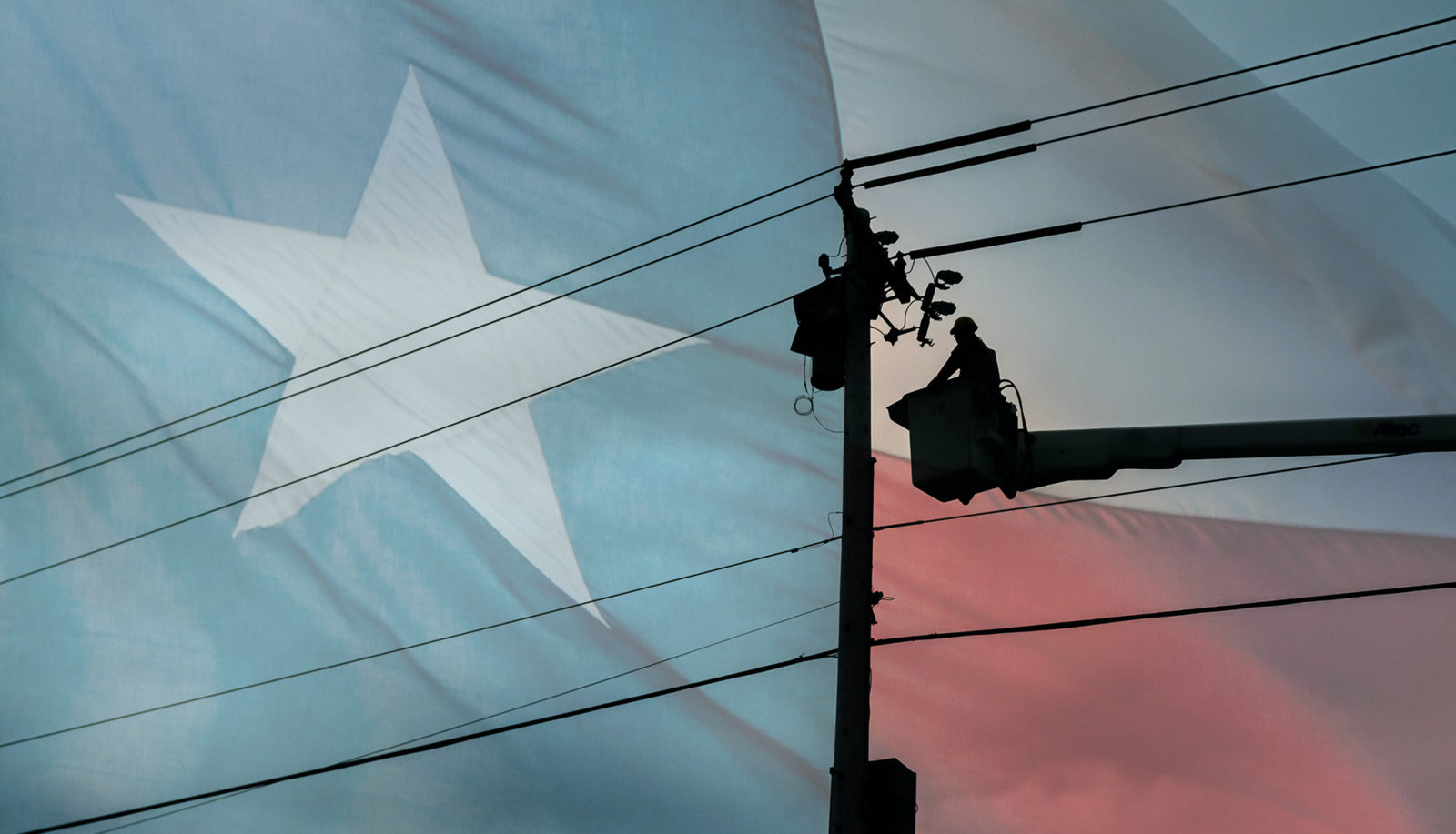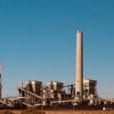What went wrong, and could it have been prevented? Last week, freezing temperatures swept across Texas and caused widespread power blackouts, water and food shortages, and a horrifying humanitarian crisis. Yet, rather than provide detailed analyses of the causes of the crisis and focus on long-term remedies, top Texas officials and other Republicans made the rounds decrying renewables and blaming clean energy and the Green New Deal for these failures that led to people’s deaths. This is not only untrue and misguided, but it misses the opportunity to focus on the real issues that led to this failure, and therefore the solutions necessary.
Scale and Impacts
More than 4 million homes and businesses were without power during the peak of the crisis, as the Electric Reliability Council of Texas (ERCOT) had to impose rolling blackouts to prevent catastrophic grid collapse. Though the number of customers without power declined drastically over the following days, the winter storm claimed the lives of dozens and laid bare Texas’ lack of preparation for widespread, prolonged cold spells.
Clean water also became scarce as a result of the blackouts, with nearly half of the state (over 13 million residents) having been under boil water notices. Houston Methodist and St. David’s in Austin were two of the hardest-hit hospital systems and were forced to find creative ways to access water while transferring other patients or delaying treatments.
The energy shortage led to a dangerous level of desperation among residents. In Harris County alone, home to Houston, there were over 300 cases of carbon monoxide poisoning, as residents without heat resorted to burning personal belongings indoors to stay warm. And for those forced to resort to public warming centers or the homes of friends and family, potential COVID-19 transmission emerged as an additional level of concern.
Losses to the state’s economy due to blackouts figure to be astounding. A 2013 ERCOT-commissioned report reasoned that the economy lost about $6,000 an hour for each megawatt that could have been delivered but wasn’t. With power companies undergenerating to the tune of 20,000 megawatts on Monday and Tuesday last week, that would equate to losses of $120 million an hour, or $2.8 billion a day.
“When the dust settles, these central U.S. power outages will likely prove to be the most costly power outages in human history, measured in dozens of lives lost and hundreds of billions of dollars.”
— Gregg Dixon, CEO of Voltus
Meanwhile, citizens had an additional stressor piled on them: exorbitant utility fees for electricity usage during the demand spike and generation shortages. Prices in the state’s wholesale market jumped from under $50 per megawatt hour to $9,000 per megawatt hour. Griddy, a supplier with roughly 29,000 customers, gained notoriety as customers shared bills for thousands of dollars of usage during the crisis. The Public Utility Commission (PUC) of Texas subsequently ordered companies to stop disconnecting customers and to stop sending invoices and or bill estimates to customers, though there is no known time frame when these issues might be resolved.
Independence and Deregulation
While the uncommon cold blast that swept over the central US last week caused hardships in other states, Texas was alone in the scale of devastation to its energy infrastructure. This is largely due to the fact that Texas operates an electric grid independent from other states and the federal government. A point of pride for many Texas Republicans who despise the type of federal oversight that comes with integrated grids, this go-at-it-alone strategy prevented the state from being able to supplant its gravely diminished energy supply with resources from neighboring states.
The Texas wholesale market produces cheaper energy than the nationally-regulated Eastern and Western Interconnections, and the price prior to the current crisis was roughly half that of the national average. However, the low prices Texans enjoy have been aided significantly by a deregulation scheme that began under then-Governor George W. Bush (R) in 1999.
Under this deregulation scheme, generators make money only through the electricity they sell, creating no incentive to invest in equipment to safeguard production from the cold or provide backup in other emergencies. This stands in contrast to other regions that pay power companies to make sure they have generators on call during times of high demand. Republicans in the state have long touted the system due to its low energy prices, profits for energy market utilities, and avoidance of federal regulations, but procuring these risked the grid reliability nearly 30 million Texans depend on.
A Disaster in the Making
Curiously, blackouts similarly caused by frozen power generation occurred in both 1989 and 2011, the first of which resulted in a federal study that recommended winterization of equipment similar to power providers in more northern states. Analyzing the freeze and “near loss of the entire ERCOT electric grid,” the PUC in 1990 wrote that utilities should implement procedures to correct freeze protection equipment prior to the onset of cold weather.
“Whether the corrective actions being implemented by the utilities are sufficient to prevent future freeze-related power plant failures, only direct experience with another deep freeze will ascertain.”
— Public Utility Commission of Texas, November 1990
Then, in 2011, three million Texans lost power as similar cold weather circumstances roiled the energy supply and shut down 152 of the 550 generating units over three days. Reports after that incident from both federal officials and ERCOT once again singled out winterization efforts as the key solution, particularly for natural gas wells, pipes, and plants. The Federal Energy Regulatory Committee report declared, “The single largest problem during the cold weather event was the freezing of instrumentation and equipment.”
Suggestions that the state incentivize or mandate power providers to protect against extreme cold went unheeded. Additionally, Texas led the nation in new home construction over the past decade with roughly 1.6 million homes built. The stress to the system was compounded by the relative lack of insulation among many Texas homes and the growth of electric-based heating in recent decades. Texas regulators essentially chose to once again let a ticking time bomb reach zero, and human-driven climate change threatens to make cold arctic blasts reaching the American South even more frequent.
Governor Abbott’s Response: Mislead and Scapegoat
Texans and concerned individuals across the nation looked to the state leadership to provide, in the absence of electricity, at least truthful answers about the collapse. Seemingly under-appreciating the real-time threats to his constituents, Governor Greg Abbott (R) decided to make an appearance on Sean Hannity’s Fox News show during the peak of the crisis last Tuesday, deriding the Green New Deal and frozen wind turbines instead of providing guidance and information to his desperate citizenry.
“So this shows how the Green New Deal would be a deadly deal for the United States of America. Texas is blessed with multiple sources of energy, such as natural gas and oil and nuclear, as well as wind. But you saw … our wind and our solar got shut down and they were collectively more than 10 percent of our power grid and that thrust Texas in a situation where it was lacking power on a statewide basis.”
— Texas Gov. Greg Abbott, Feb. 16, 2021
Abbott’s portrayal of Green New Deal policies and renewables as a threat to the livelihood of Americans could not be further from the truth. For starters, no policies even close to resembling the Green New Deal exist in Texas, a state that has been dominated by Republicans in recent decades and aggressively pursued deregulation of its energy sector. This includes purposeful inaction regarding winterization efforts for all sources of energy, including natural gas and wind. Perhaps Abbott was too focused on crafting an anti-renewables narrative to recognize the successful use of wind turbines year-round in the much colder Northeast, northern Midwest and Great Plains, and Pacific Northwest. The real “deadly deal” for the U.S. is not clean power but the climate crisis itself, particularly if paired with the long-term inaction and disregard for planning expertise shown by Texas Republicans.
Beyond these foundational facts, Abbott also deliberately ignored the realities of energy production in his state. During the winter, just ten percent of power generation comes from wind, with the state largely buoyed by natural gas. And although there was a dent to energy production caused by frozen wind turbines, the impact on energy supply from shutdowns of natural gas plants was significantly more impactful to the crisis last week.
ERCOT reported thermal plants (gas, coal, and nuclear) accounted for five times the lost power generation of wind. Overall, up to 46 gigawatts, or roughly 40 percent of Texas’ power capacity generation, was offline due to the cold. The fact that 61 percent of the losses were from thermal plants, compared to 39 percent for both wind and solar, points to the state’s universal lack of winterization efforts and regulations as the culprit, not the federal-level policy proposal that the Green New Deal is.
“What we really learned this time is that, in such an extreme event, we saw every kind of generation have trouble.”
— Bill Magness, ERCOT President & CEO
Deflecting any blame from himself or his party for the historic ill-preparedness, Abbott directed much of his ire toward the more politically-insulated ERCOT. Five non-Texas residents on the fifteen member ERCOT board have subsequently resigned as outrage over their non-residency grew. However, four of the resignees occupied “unaffiliated” director positions, meaning they were required to remain independent of any business or market segments that ERCOT oversees. The board directors wrote they would launch a review of the crisis before departing, though it is not clear how much they intend to accomplish or when vacancies will be filled.
Abbott has made grid management an emergency item for the current legislative session and backed calls for investigations, but has otherwise suggested little to restore and increase the resiliency of Texas’ power supply. Given the inaction on recommendations following previous blackouts, Texans should be wary of empty rhetoric from high-level Republicans who cared more about disparaging the Green New Deal than investing in life-saving energy security measures.
Competing Narratives Despite Truths
Abbott has since acknowledged that the natural gas, coal, and nuclear shutdowns were key to the statewide outages, but the initial rhetoric against renewables was dangerous and taken up by anti-renewable fear mongers. Texas Representative Dan Crenshaw (R) declared “This is what happens when you force the grid to rely in part on wind,” while his colleague Representative Lauren Boebert (R-CO) asserted that “The Green New Deal was just proven unsustainable as renewables are clearly unreliable.” Despite the facts that the Texas crisis did nothing to show properly-managed renewables as unreliable, especially compared to the cold-crippled thermal fuel plants, these intentionally misleading claims were trumpeted across conservative media sites and by social media users.
Former Texas Governor Rick Perry (R), who also served as Secretary of Energy under former Pres. Donald Trump, revealed the extent of Republican disregard for Texan citizens, assuming that Texans would gladly suffer without power for days just to keep the federal government from having regulatory abilities.
Meanwhile, Texas Democrats said in a press release that “blood is on Abbott’s hands.” Former Rep. Beto O’Rourke (D) lamented the “inaction & ineptitude” of Abbott and state Republicans for yet again amplifying the deadliness of disasters.
Green New Deal Co-Sponsor Representative Alexandria Ocasio-Cortez (D-NY), often a target of Republican climate ridicule, responded “I go offline a few days and return to a GOP Gov blaming policies he hasn’t even implemented for his own failures. Gov. Abbott doesn’t seem to have a grasp on his state, so here’s a reminder: Texas runs 80-90% on fossil fuels.”
We continue to see fear-mongering and finger-pointing intended at misleading the public and pushing for policy agendas that ignore science and facts. However, moments of crisis, such as the one Texas just lived through, should be wake-up calls for all the work we still need to do in ensuring a resilient future that accounts for unpredictable weather – which is only projected to worsen as the climate crisis intensifies.
Learn more about the mutual aid funds and organizations helping people on the ground through this crisis here.









